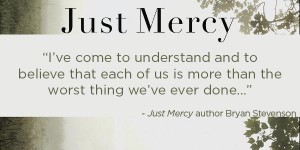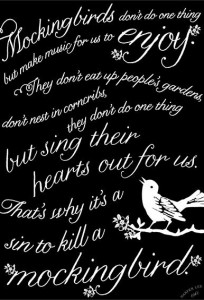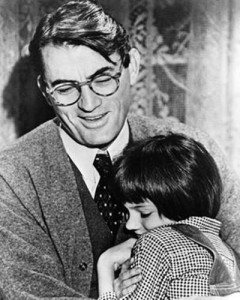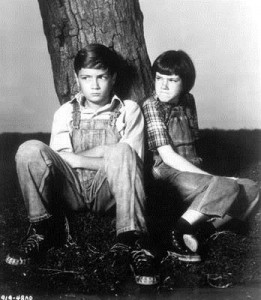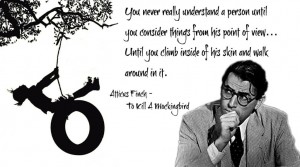Moments of Grace and Courage:
Reflecting on Dr. Fred Johnson’s “Bathing in the Sunshine of Despair”
Dr. Kathryn Schoon-Tanis
It’s easy as a white, educated woman of privilege to feel overwhelmed and paralyzed by race relations in our country. Between the beating of Rodney King and the LA race riots (when I was a Hope College student), to the killing of Trayvon Martin, to the killing (and subsequent riots) of Michael Brown in Ferguson, Missouri, it seems that we haven’t come all that far since the Jim Crow era of the early to mid 20th century in that it seems that we have a different justice system – different rules – when it comes to the lives of young Black men.
Yet, as Dr. Fred Johnson took his audience on a historical journey in order to set the context for Harper Lee’s To Kill a Mockingbird, he reminded us that there have moments of grace and courage along the way, whether a moment of peace and grace in the midst of a storm that Grace Lorch offered Elizabeth Eckford as she took the first steps of integration, or a moment of courage as James Zwerg, a Freedom Rider, faced violence and brutality. And, as Dr. Johnson highlighted, there was a moment of courage as Harper Lee wrote her book about racial injustice in a small, Southern town – a book that has stood the test of time, encouraging and challenging readers of all ages for over five decades.
To understand Lee’s courage, one must understand the circumstances – legal and social – that created a climate for slavery; for Civil War; for intentional, institutionally sanctioned segregation. In order to do this, Dr. Johnson walked his audience from the colonial slave codes, to the laws passed to protect slavery and the brutalization of Black Americans, to the material destruction of the Civil War, to the Reconstruction Amendments that worked to reinstate the status quo of slavery, to questions, like that of Frederick Douglass, that remain current today: “Do you mean to make good the promises of your Constitution?” And, while Dr. Johnson acknowledged that yes, we as a country have come far, there is still much to be done. We are not in a post-racial society in that we still have to make our Constitution a reality that applies to every American citizen. We are in need of an acceptance of our past, and we need to take responsibility for our present. We need to realize, as Harper Lee states, “You never really understand a person until you consider things from his point of view… Until you climb inside of his skin and walk around in it.” Because, as Dr. Johnson reminds us, “My humanity is in need of your humanity.”



